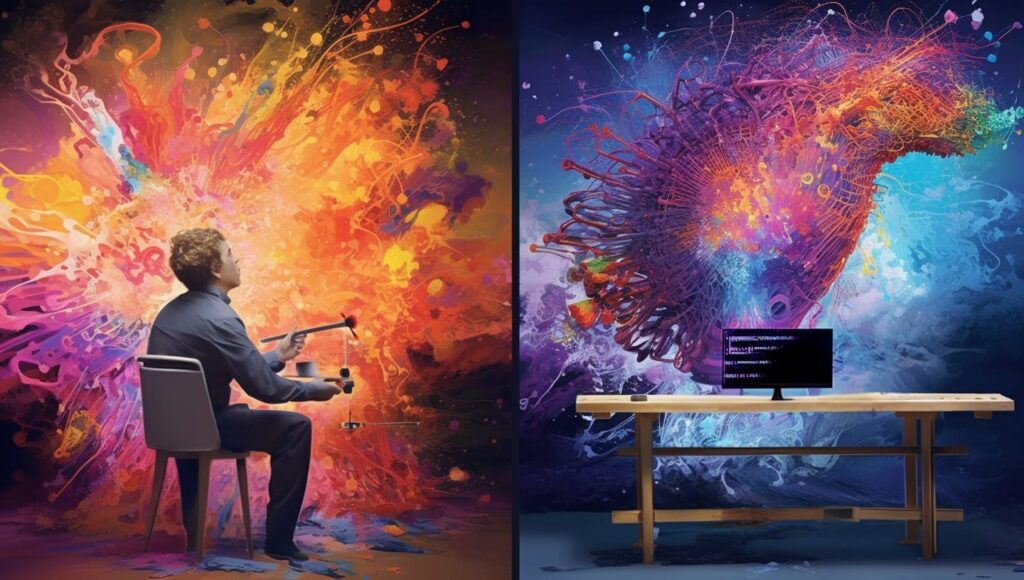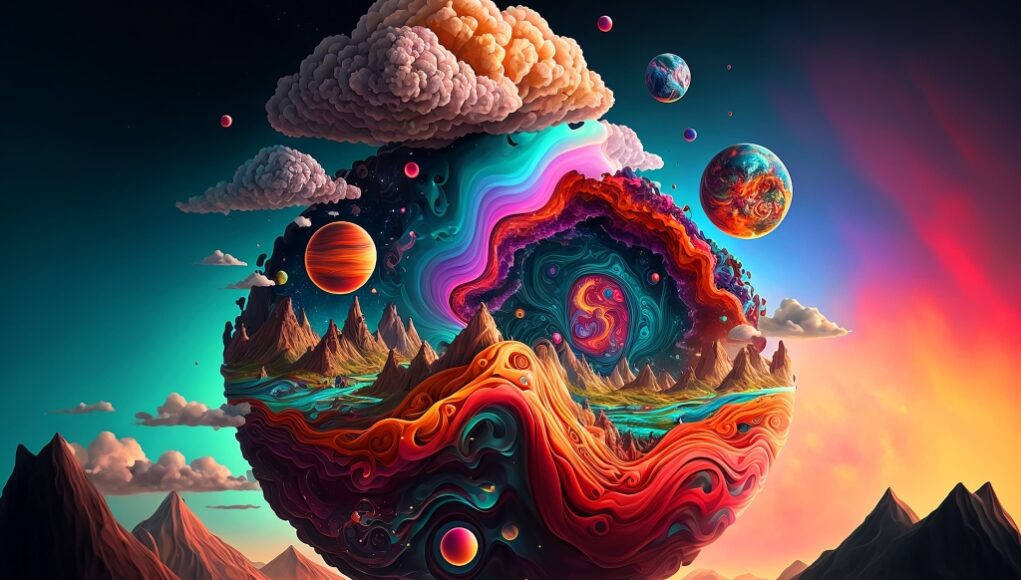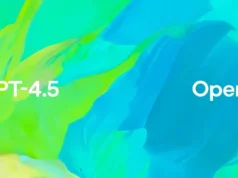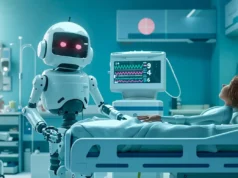In the age of artificial intelligence, the line between human and machine-created art is increasingly blurred. With tools like DALL·E, MidJourney, and Artbreeder making headlines, AI-generated art is pushing boundaries, challenging long-standing notions of creativity, and sparking debates about what constitutes true artistry.
But the question persists: Is AI-generated art a genuine form of creativity, or is it merely sophisticated imitation?
To answer that, we need to explore the nature of creativity itself, the role AI plays in art creation, and the ethical and philosophical implications of machines making art.
The Rise of AI Art
AI-generated art refers to visuals created by algorithms—often trained on massive datasets of existing artwork, photographs, and images. By recognizing patterns, styles, and structures in the data, AI models can create new, often striking images that mimic human creativity.
One of the most famous AI art generators is DALL·E, developed by OpenAI. This model can generate detailed images from text descriptions, such as “a futuristic city with flying cars and a glowing purple sunset” or “an astronaut riding a horse in the style of Van Gogh.” Other platforms like MidJourney and DeepArt allow users to input prompts, creating unique works of art in seconds.
The allure of AI art lies in its ability to combine vast amounts of data and patterns to generate something new—without a human artist’s hand. But this raises a critical question: Does creativity require intention, emotion, and consciousness, or can machines simply reproduce art without those elements?
Imitation or Innovation?

At the heart of the AI art debate is whether these creations are truly original or simply imitations of the works they’ve been trained on. AI models like DALL·E don’t “create” art in the traditional sense. They analyze millions of images and generate new ones based on learned patterns. In this way, the AI is mimicking existing artistic styles, techniques, and concepts.
Imitation: A Form of Creativity?
One of the most compelling arguments against AI art is that it relies heavily on imitation rather than genuine creativity. After all, these models are not inventing new forms of art—they are remixing existing ones. A DALL·E image of a dog riding a skateboard might be novel, but it’s still grounded in pre-existing concepts: dogs, skateboards, and the stylistic choices of whatever dataset the model was trained on.
Critics argue that creativity, by definition, requires the ability to innovate, express personal experience, and convey meaning. Machines lack the subjectivity that humans bring to art creation. An artist’s life experience, emotions, and social context are central to how they create and interpret their work. Can a machine replicate these human qualities? Probably not.
Moreover, AI models can only generate images based on what they’ve learned from human creations. They cannot independently create a new aesthetic, nor can they genuinely understand the cultural significance or emotional resonance of their works.
Innovation: Pushing Boundaries of What Art Is
On the other side of the debate, AI-generated art enthusiasts argue that these systems are pushing the boundaries of what art can be. They contend that creativity isn’t just about invention from scratch—it’s also about combining existing elements in new and meaningful ways.
Take the work of AI artists like Mario Klingemann and Refik Anadol, who use generative models to create stunning, complex pieces that don’t mimic a single artist or style. The results are often visually stunning and conceptually deep, challenging our understanding of what art is and can be.
AI, in this sense, is more of a tool for artists, akin to the camera or the paintbrush. Just as the invention of the printing press allowed for new forms of expression, generative AI is opening up new creative possibilities. Rather than replacing human artists, AI tools are providing them with new ways to express themselves and explore ideas. The fact that a machine can take the elements of existing art and generate something fresh should be seen as a form of innovation—not mere imitation.
AI-generated art can also reveal patterns and combinations of elements that humans may not see, leading to new artistic forms that expand the creative landscape. AI’s ability to produce variations on a theme in a fraction of the time it would take a human can also inspire new ways of thinking about and approaching art creation.
The Ethical and Legal Implications

Beyond the philosophical debates about creativity and imitation, AI-generated art also brings up significant ethical and legal concerns.
Ownership and Copyright
Who owns an artwork created by an AI? Is it the person who provided the prompts, the creator of the model, or the machine itself? This is a complex issue that currently lacks clear answers. Traditional copyright law assumes that the creator is a human, but what happens when the creator is a machine?
Several legal challenges have already arisen, such as the case of an artist who sued over the use of their works to train AI without their consent. As AI art becomes more widespread, these questions will become even more pressing.
The Risk of Displacing Human Artists
Another concern is the potential for AI art to displace human artists, especially in industries like commercial design, advertising, and entertainment. AI-generated images can be produced faster and cheaper than traditional art, which may lead to fewer opportunities for human artists. While AI can augment human creativity, it can also create pressure on artists to compete with machines that work at lightning speed.
Moreover, the proliferation of AI-generated art could dilute the value of human-made works. As AI becomes more capable of producing realistic and convincing art, there may be less appreciation for the personal effort and skill that goes into handmade creations.
Cultural Appropriation and Bias
Generative AI models are trained on vast datasets scraped from the internet, meaning that the art they create is often influenced by cultural biases present in those datasets. AI can unintentionally reproduce stereotypes or misrepresent marginalized cultures, perpetuating harmful tropes in art. Without proper oversight, AI-generated art risks perpetuating these biases on a larger scale.
The Future of AI-Generated Art
As AI tools evolve, they will likely play an increasingly central role in the art world. Rather than replacing human artists, generative AI can serve as an enhanced creative tool, helping artists explore new ideas, experiment with styles, and overcome creative blocks.
The key will be collaboration: artists using AI as a tool to augment their creative process, rather than viewing it as a replacement. Just as photography didn’t end painting but rather expanded what we understand as visual art, AI could open up new dimensions of creativity.
Moreover, AI will likely redefine what it means to be an artist. We may move towards a more inclusive and diverse definition of creativity—one that acknowledges not just human expression but also the ways in which technology and algorithms can be part of the artistic process.
Conclusion
AI-generated art challenges the very concept of creativity, forcing us to ask fundamental questions about the nature of artistic expression. Is it imitation, or is it innovation? While AI may not create art in the traditional sense, it is certainly expanding the horizons of what art can be.
As we continue to explore AI’s role in the creative process, it’s essential that we consider the ethical and cultural implications alongside the technological advancements. Ultimately, the future of AI art will depend on how we, as a society, choose to navigate the intersection of technology, creativity, and humanity.




